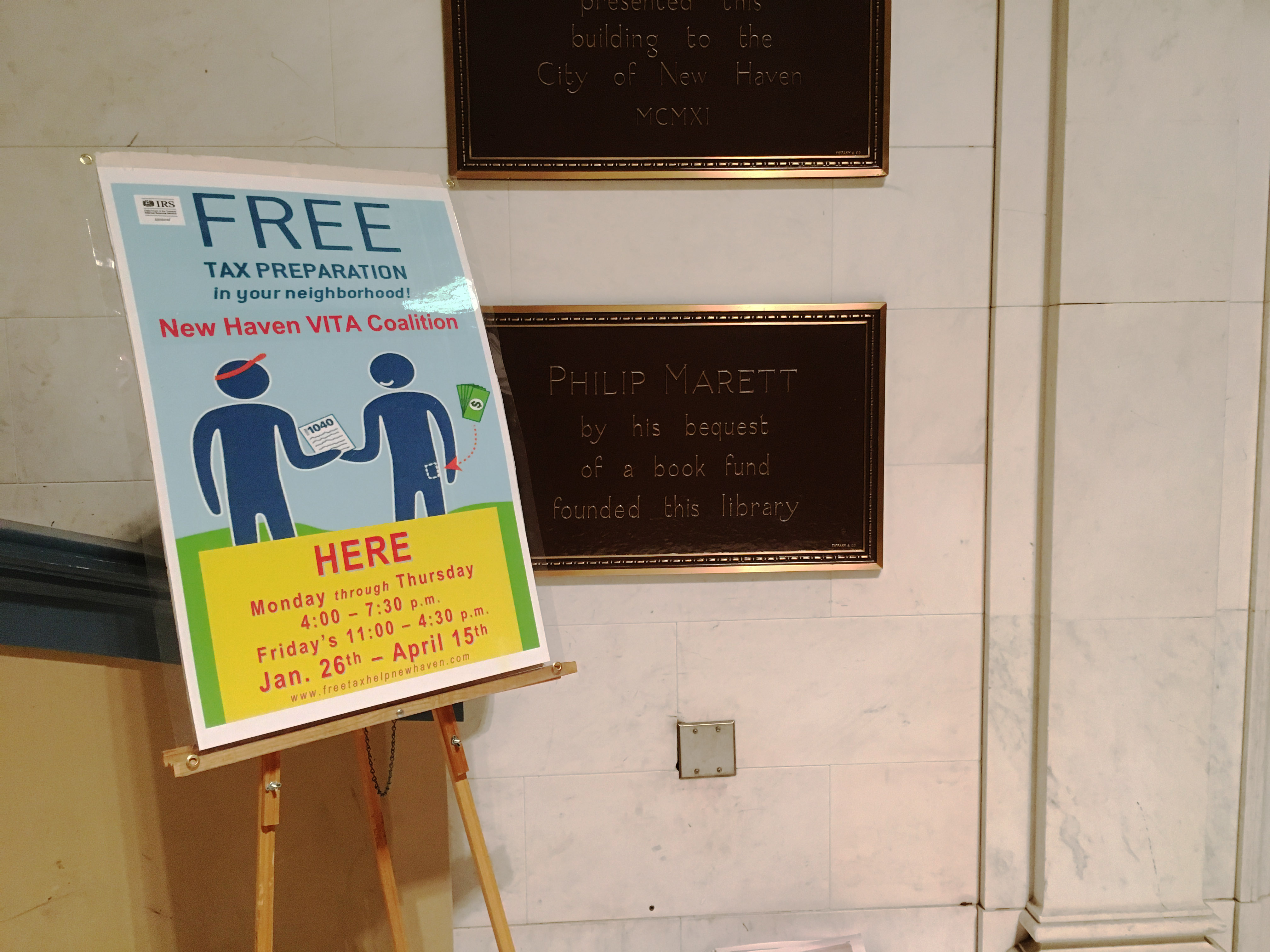
At stations scattered throughout the lower level of the New Haven Free Public Library’s main branch, volunteers prepared taxes alongside Elm City residents on Tuesday afternoon.
Surrounded by representatives from local and state agencies and nonprofits, Mayor Toni Harp kicked off this year’s tax season in City Hall earlier that day. Harp and other officials promoted the 14 free Volunteer Income Tax Assistance centers across the greater New Haven area, including Elm Haven Community Center, Stop and Shop Community Room and the New Haven Free Public Library. Established by the Internal Revenue Service, the VITA Program uses trained volunteers to prepare tax returns for low-income taxpayers around the country. These volunteers — including Yale students and other New Haven residents — help local families claim both federal and state tax credits that can be used to pay off bills or debt and to save for emergencies, IRS Senior Tax Consultant Ron Peruzzi said.
“It’s not your typical image of the IRS,” Jim Horan, chief executive officer of the nonprofit Connecticut Association for Human Services, said. “They’re really doing a lot to make sure that tax filers get the refunds and credits they deserve.”
How can I file taxes and is there a deadline for end-of-year reports? Tax forms are inherently confusing and challenging, Harp said, adding that hiring an accountant to handle taxes can cost up to $400. But the volunteer nature of the VITA program ensures that working families do not have to pay high fees to comply with the IRS.
Harp lauded the Connecticut Earned Income Tax Credit that VITA helps families claim. She said it levels the playing field and helps circulate capital through the local economy. As a state senator, Harp helped Gov. Dannel Malloy install the state EITC in the state budget in 2011, Horan said. State officials initially set Connecticut’s EITC to equal 30 percent of the federal EITC, gearing it toward low- to moderate-income working individuals. Residents can receive up to $6,242 from the federal tax credit.
Because the credit is only available for individuals who are employed, the EITC creates an incentive for people to hold jobs, Perusi said.
After the state EITC was approved by the legislature in 2011, its percentage relative to the federal EITC dropped to 25 percent in 2013 and 27.5 percent in 2014.
Although state budget shortfalls have limited the EITC since 2011, advocacy group Connecticut Voices for Children will be calling on the state legislature to raise the EITC back to its original percentage, CT Voices Fiscal Policy Fellow Derek Thomas said.
“[Raising the EITC] would put an additional 50 dollars into these families’ pockets,” Thomas said. “Currently that’s enough for maybe two tanks of gas.”
Last year VITA volunteers prepared nearly 4,800 tax returns in Greater New Haven, according to a report from CAHS. Those returns yielded over $8.7 million of refunds to local families.
A survey of tax filers using VITA in the 2014 season showed that nearly 70 percent of them had previously filed their taxes at a VITA site. In the survey, 63 percent of filers reported planning to use their tax refund to pay bills.
The NHFPL main branch site has seen a surplus of taxpayers trying to file taxes with VITA, site coordinator Trevor Williams ’17 said.
“People are clamoring for the service,” Williams said. “I think word of mouth travels fast.”
Sponsors of the city’s VITA campaign this year include the United Way of Greater New Haven and the Community Foundation for Greater New Haven.
Interested in getting more news about New Haven? Join our newsletter!







